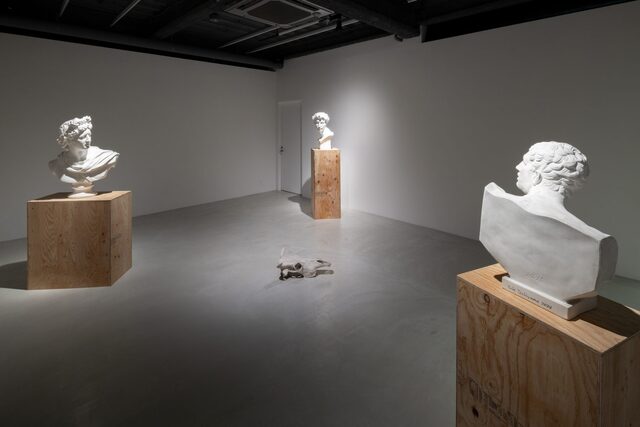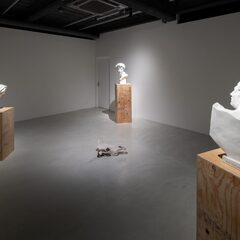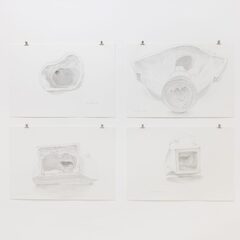
Main Gallery
Exhibition 2024
Yuki Tsukiyama
2024.7.5 Fri - 2024.8.3 Sat
TEZUKAYAMA GALLERY is pleased to announce that sculptor Yuki Tsukiyama’s solo exhibition “Exhibition 2024,” starting on July 5.
Tsukiyama was born in Kobe, Hyogo Prefecture in 1976 and graduated from the Sculpture course at Kyoto University of the Art in 2000. He has since been based in his hometown of Kobe, actively working mainly in the Kansai region. Since June 2023, Tsukiyama has also been the head of C.A.P. (The Conference on Art and Projects), a Kobe based artist community committed to improving the interaction between art and society.
Tsukiyama works with various materials, including metal, resin, wood, and paint. However, his starting point for creation always lies in the material itself. Through repeated experiments, which he refers to as “playing,” he captures the unique characteristics of each material, making them a part of the theme of his works. In this exhibition, Tsukiyama will focus on plaster statues and a real cow skull received from a painting class. He was exploring the meanings and interpretations these objects hold across different times and cultures. As he carves the plaster statues, influenced by his beliefs, emotions, experiences, and cultural background, he imbues them with an embellishment and his reality. By rotating the plaster statue and experiencing it tactilely, he approaches a sense of reality. Through the interplay between reality and existence, Western and Eastern perspectives, ancient sculptors and modern plaster craftsmen, and the remains of the deceased, “Tsukiyama’s reality” is formed, creating new meanings and values.
[Artist’s Statement]
Among the drawing motifs I received after their role had ended were plaster statues and a cow skull.
Unlike beautifully crafted plaster statues such as Apollo, Medici, Borghese, and Venus, which are considered ideal for shading training, the cow skull’s decaying remains presented me with an overwhelming sense of presence. I wondered if I could surpass the cow skull’s existence by chiselling it into plaster statues reproduced from ancient Greek sculptures through countless moulds and models.
As I carved, I found myself less concerned with details like the texture of hair or the intricacies of ears. There were moments when the plaster statues felt like a neighbor, possessing a presence right before me. Is this what one calls reality? The Medici statue is attributed to Michelangelo. Although not an original, I carved it with a bit of excitement, tracing the work of an ancient master. Additionally, observing the back of the plaster statue revealed the unconscious work of craftsmen, with sculptural reinforcements added to support the fragile material. The plaster drawing depicts the form as a “motif.”
Carving the front and drawing the back. It is an attempt to bridge the gap between ancient sculptor and modern plaster craftsman, and the remains of the deceased, spanning over 2000 years.





